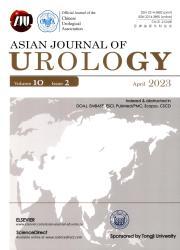Worldwide variations in the knowledge and use of fluoroscopy during percutaneous nephrolithotomy—should we do better? A survey by the European Association of Urology Section for Uro-Technology and the International Alliance of Urolithiasis
IF 2.4
3区 医学
Q2 UROLOGY & NEPHROLOGY
引用次数: 0
Abstract
Objective
This study aimed to investigate the level of knowledge among urologists of usage of fluoroscopy during percutaneous nephrolithotomy.
Methods
We conducted an anonymous internet-based survey addressed to the EAU Section of Uro-Technology and the International Alliance of Urolithiasis members with particular interest in the stone treatment at all levels of expertise. The final version of the questionnaire included 31 questions, evaluated the level of knowledge on X-ray utilization and exposure, and identified correlations between geographic areas, levels of seniority, surgical volumes, and awareness on radiation protection.
Results
In total, 586 respondents were included. Knowledge of fluoroscopy settings appeared low, particularly among trainees (up to 87.5% were uninformed, p=0.008). Precautions to reduce exposure appeared poorly followed as up to 25.4% of respondents used regularly continuous fluoroscopy, and up to 20.5% used regularly high-frequency setting and this trend was more obvious among senior specialists (6.2% of trainees used high-frequency settings vs. 21.3% of consultants, p<0.05). Additionally, only 24.9% of respondents would provide X-ray protection to patients too.
Conclusion
Although high and routinary utilization of X-rays, the level of awareness and adhesion to “as low as reasonably achievable” principles among endourologists seems suboptimal in 65.0% of all respondents. Highest volume surgeons, inevitably at higher risk, do not seem to adopt more precautions. More efforts should be addressed to improve these results, reducing the risk related to excessive radiation exposure for both surgical staff and patients in order to minimize health related issues.
经皮肾镜碎石术中透视知识和使用方面的全球差异--我们是否应该做得更好?欧洲泌尿外科协会泌尿技术分会和国际尿路结石联盟的一项调查
目的了解泌尿科医师在经皮肾镜取石术中对透视的了解程度。方法:我们进行了一项匿名的基于互联网的调查,针对尿路技术的EAU部分和国际尿石症联盟的成员,他们对所有水平的结石治疗特别感兴趣。调查问卷的最终版本包括31个问题,评估了x射线利用和照射的知识水平,并确定了地理区域、资历水平、手术量和辐射防护意识之间的相关性。结果共纳入调查对象586人。对透视设置的了解似乎很低,特别是在受训人员中(高达87.5%的人不知情,p=0.008)。减少暴露的预防措施似乎没有得到很好的遵循,高达25.4%的受访者定期使用连续透视,高达20.5%的受访者定期使用高频设置,这一趋势在高级专家中更为明显(6.2%的培训生使用高频设置,21.3%的顾问,p<0.05)。此外,只有24.9%的受访者会为患者提供x射线保护。结论:尽管有较高的x线使用率和常规使用率,但在所有调查对象中,有65.0%的腔内科医师对“尽可能低的合理可达到”原则的认知和粘附程度似乎不是最佳的。容量最大的外科医生,不可避免地有更高的风险,似乎没有采取更多的预防措施。应作出更多努力来改善这些结果,减少与外科工作人员和患者的过度辐射暴露有关的风险,以尽量减少与健康有关的问题。
本文章由计算机程序翻译,如有差异,请以英文原文为准。
求助全文
约1分钟内获得全文
求助全文
来源期刊

Asian Journal of Urology
UROLOGY & NEPHROLOGY-
CiteScore
4.00
自引率
3.80%
发文量
100
审稿时长
4 weeks
期刊介绍:
Asian Journal of Urology (AJUR), launched in October 2014, is an international peer-reviewed Open Access journal jointly founded by Shanghai Association for Science and Technology (SAST) and Second Military Medical University (SMMU). AJUR aims to build a communication platform for international researchers to effectively share scholarly achievements. It focuses on all specialties of urology both scientifically and clinically, with article types widely covering editorials, opinions, perspectives, reviews and mini-reviews, original articles, cases reports, rapid communications, and letters, etc. Fields of particular interest to the journal including, but not limited to: • Surgical oncology • Endourology • Calculi • Female urology • Erectile dysfunction • Infertility • Pediatric urology • Renal transplantation • Reconstructive surgery • Radiology • Pathology • Neurourology.
 求助内容:
求助内容: 应助结果提醒方式:
应助结果提醒方式:


